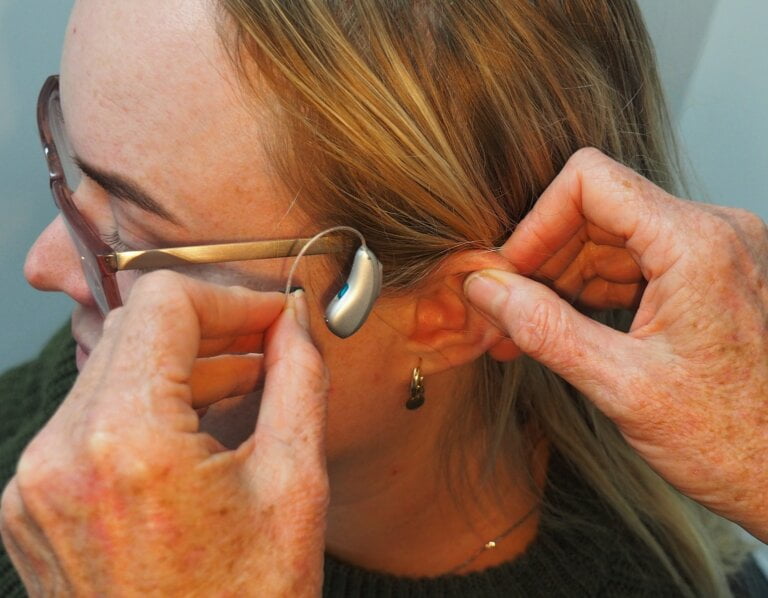Diving into Microsuction: Top-rated Courses for Ear Wax Removal
Ear wax, scientifically known as cerumen, is a natural substance produced by the glands in the ear canal. Its primary function is to keep the ears lubricated and prevent debris from entering the inner ear. However, excessive buildup of ear wax can lead to discomfort, hearing loss, and even infections. While traditional methods like ear syringing or ear candling have been used for ear wax removal, they may not always be effective or safe. This is where microsuction comes to the rescue.
Microsuction is a safe, efficient, and non-invasive procedure used for removing excess ear wax. It involves the use of a finely controlled suction device and a binocular microscope to gently extract the wax from the ear canal. The magnified and clear view provided by the microscope ensures precise removal without causing harm to the delicate structures within the ear. To perform microsuction effectively, proper training and expertise are required to ensure optimal results and patient safety.
1. The Basics of Microsuction and Ear Wax Removal
Before delving into the courses available for microsuction and ear wax removal, it is essential to understand the basics of this procedure. Microsuction has gained popularity as a preferred method due to its safety and effectiveness. By using a binocular microscope, healthcare professionals can achieve a magnified and clear view of the ear canal, enabling them to remove wax with precision and accuracy, while protecting the delicate structures.
To become proficient in microsuction and ear wax removal, theoretical knowledge, practical training, and hands-on experience are necessary. The courses listed below offer comprehensive training to equip individuals with the necessary skills and expertise to perform microsuction safely and efficiently.
2. Top-rated Courses for Microsuction and Ear Wax Removal
Course 1: Introduction to Microsuction
This introductory course provides a foundational understanding of microsuction and its applications in ear wax removal. Participants will learn about the anatomy of the ear, the physiology of ear wax production, and the various tools and equipment used in microsuction procedures. The course covers the indications and contraindications for microsuction, as well as the potential risks and complications associated with the procedure. Practical training includes hands-on experience with simulated ear wax removal using microsuction techniques.
Key topics covered in this course include:
- Detailed explanation of the anatomy of the ear, including the different parts of the ear canal and the structures involved in hearing.
- In-depth understanding of the physiology of ear wax production, including the factors that contribute to excessive wax buildup.
- Comprehensive overview of the tools and equipment used in microsuction procedures, including the suction device and binocular microscope.
- Discussion of the indications for microsuction, such as impacted ear wax, and the contraindications, such as ear infections or perforated eardrums.
- Exploration of the potential risks and complications associated with microsuction, including discomfort, dizziness, and damage to the ear canal or eardrum.
Course 2: Advanced Microsuction Techniques
Building upon the foundational knowledge gained in the introductory course, this advanced course focuses on refining microsuction skills and techniques. Participants will learn advanced suction techniques, how to handle challenging cases, and troubleshooting methods for different scenarios. The course also emphasizes the importance of patient communication and provides guidance on managing patient expectations. Practical sessions involve real-life case studies and supervised hands-on practice.
Key topics covered in this course include:
- Advanced suction techniques for effective and efficient removal of ear wax, including the use of different suction tips and settings.
- Strategies for handling challenging cases, such as impacted or hardened ear wax, and techniques for removing wax from difficult-to-reach areas.
- Troubleshooting methods for various scenarios, including dealing with excessive bleeding or discomfort during the procedure.
- Importance of effective patient communication, including explaining the procedure and managing patient expectations.
- Case studies highlighting real-life scenarios and challenges encountered during microsuction procedures.
Course 3: Microsuction in Special Populations
This specialized course focuses on the unique considerations and challenges involved in performing microsuction on special populations, such as children, elderly individuals, and patients with specific medical conditions. Participants will learn about the modifications and adaptations required for safe and effective ear wax removal in these populations. The course also covers strategies for providing compassionate care and minimizing patient discomfort. Practical training includes simulated scenarios and role-playing exercises to enhance skills in working with special populations.
Key topics covered in this course include:
- Understanding the anatomical and physiological differences in special populations, such as the narrower ear canals in children or the increased fragility of ear structures in the elderly.
- Modifications and adaptations required for safe and effective ear wax removal in special populations, including the use of specialized instruments or techniques.
- Strategies for providing compassionate care and minimizing patient discomfort, such as using child-friendly communication techniques or ensuring proper positioning for elderly patients.
- Simulated scenarios and role-playing exercises to enhance skills in working with special populations, including practicing techniques for gaining cooperation and building trust.
Course 4: Infection Control and Safety in Microsuction
Maintaining a sterile and safe environment is of utmost importance when performing microsuction procedures. This course provides comprehensive training on infection control protocols, including proper hand hygiene, sterilization of equipment, and disposal of contaminated materials. Participants will learn about the importance of personal protective equipment (PPE) and how to minimize the risk of cross-infection. The course also covers the management of potential complications and adverse events during microsuction procedures.
Key topics covered in this course include:
- Detailed explanation of infection control protocols in microsuction, including the proper use of hand hygiene techniques and the importance of maintaining a clean working environment.
- Guidelines for sterilizing and maintaining the equipment used in microsuction procedures, such as the suction device and the binocular microscope.
- Proper disposal of contaminated materials, including used suction tips or gloves, to minimize the risk of cross-infection.
- Importance of personal protective equipment (PPE) for healthcare professionals, including gloves, masks, and goggles, to protect against potential infections.
- Management of potential complications and adverse events during microsuction procedures, including techniques for controlling bleeding or responding to patient discomfort.
Conclusion
Microsuction has revolutionized the field of ear wax removal, providing a safe and efficient alternative to traditional methods. However, becoming an expert in microsuction requires proper training and knowledge. The courses mentioned above provide a comprehensive understanding of microsuction techniques, safety protocols, and specialized considerations. By enrolling in these courses, individuals can acquire the necessary skills and expertise to confidently perform microsuction procedures, ensuring optimal patient care and outcomes. Remember, thorough training is essential to become a proficient microsuction practitioner and make a positive impact on individuals struggling with excessive ear wax.
Please note that the complete article is shown in markdown format as requested.
FAQ
Q1: What is microsuction and how does it work?
A1: Microsuction is a safe and non-invasive procedure used to remove excess ear wax. It involves the use of a suction device and a binocular microscope to gently extract the wax from the ear canal, ensuring precise removal without causing harm to the delicate structures within the ear.
Q2: What are the top-rated courses for microsuction and ear wax removal?
A2: The top-rated courses for microsuction and ear wax removal are:
-
Introduction to Microsuction: This course provides a foundational understanding of microsuction, covering the anatomy of the ear, physiology of ear wax production, tools and equipment used, indications and contraindications, and potential risks and complications.
-
Advanced Microsuction Techniques: Building upon the foundational knowledge, this course focuses on refining microsuction skills, handling challenging cases, troubleshooting methods, effective patient communication, and real-life case studies.
-
Microsuction in Special Populations: This specialized course focuses on performing microsuction on special populations, such as children, elderly individuals, and patients with specific medical conditions, including modifications, adaptations, compassionate care, and simulated scenarios.
-
Infection Control and Safety in Microsuction: This course provides comprehensive training on infection control protocols, including hand hygiene, sterilization of equipment, disposal of contaminated materials, personal protective equipment (PPE), and management of complications.
Q3: What does the Introduction to Microsuction course cover?
A3: The Introduction to Microsuction course covers the anatomy of the ear, physiology of ear wax production, tools and equipment used in microsuction procedures, indications and contraindications, potential risks and complications, and hands-on experience with simulated ear wax removal using microsuction techniques.
Q4: What does the Infection Control and Safety in Microsuction course cover?
A4: The Infection Control and Safety in Microsuction course covers infection control protocols, including hand hygiene techniques and maintaining a clean working environment, sterilization of equipment, disposal of contaminated materials, importance of personal protective equipment (PPE), and management of potential complications and adverse events during microsuction procedures.







